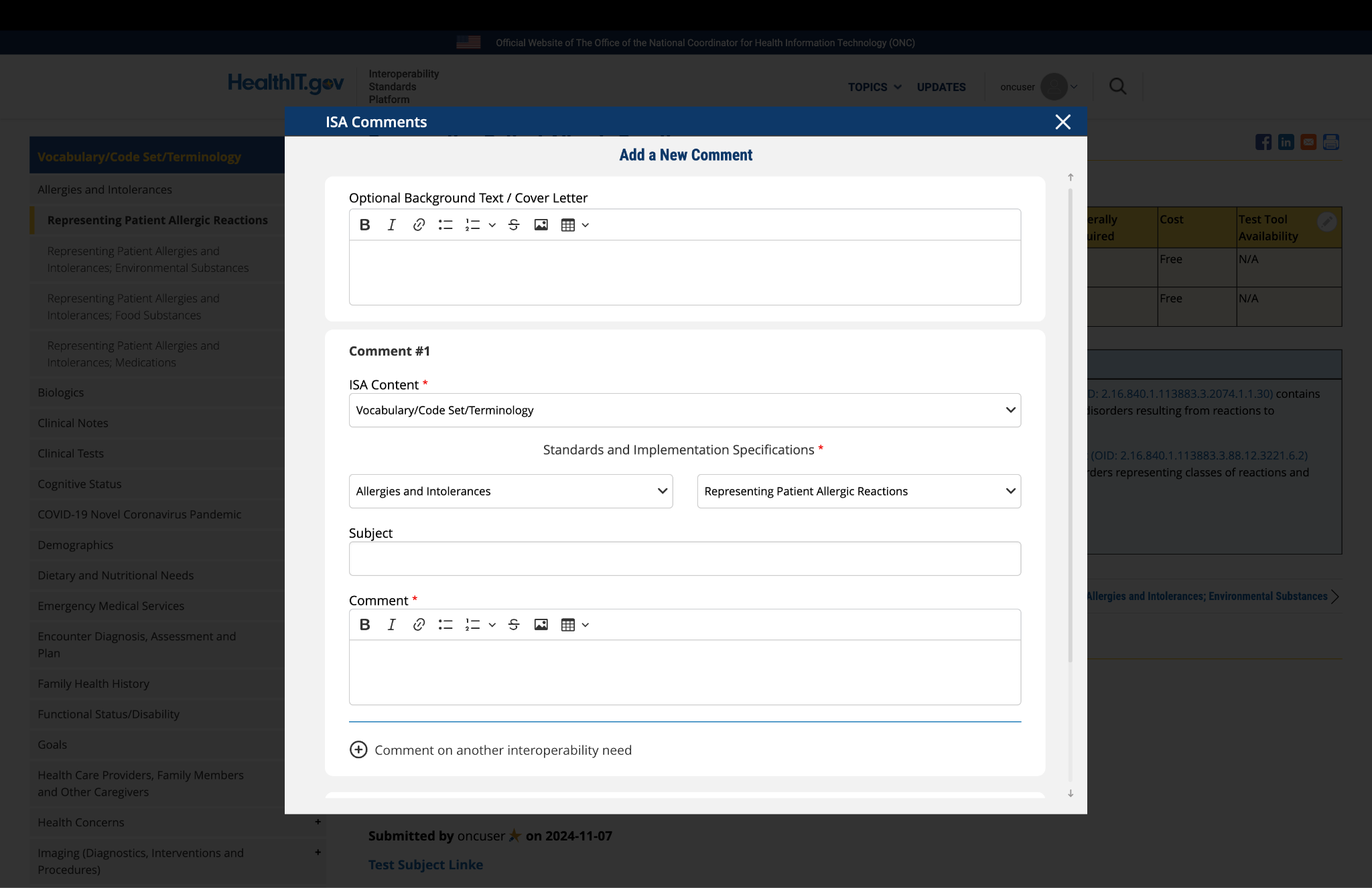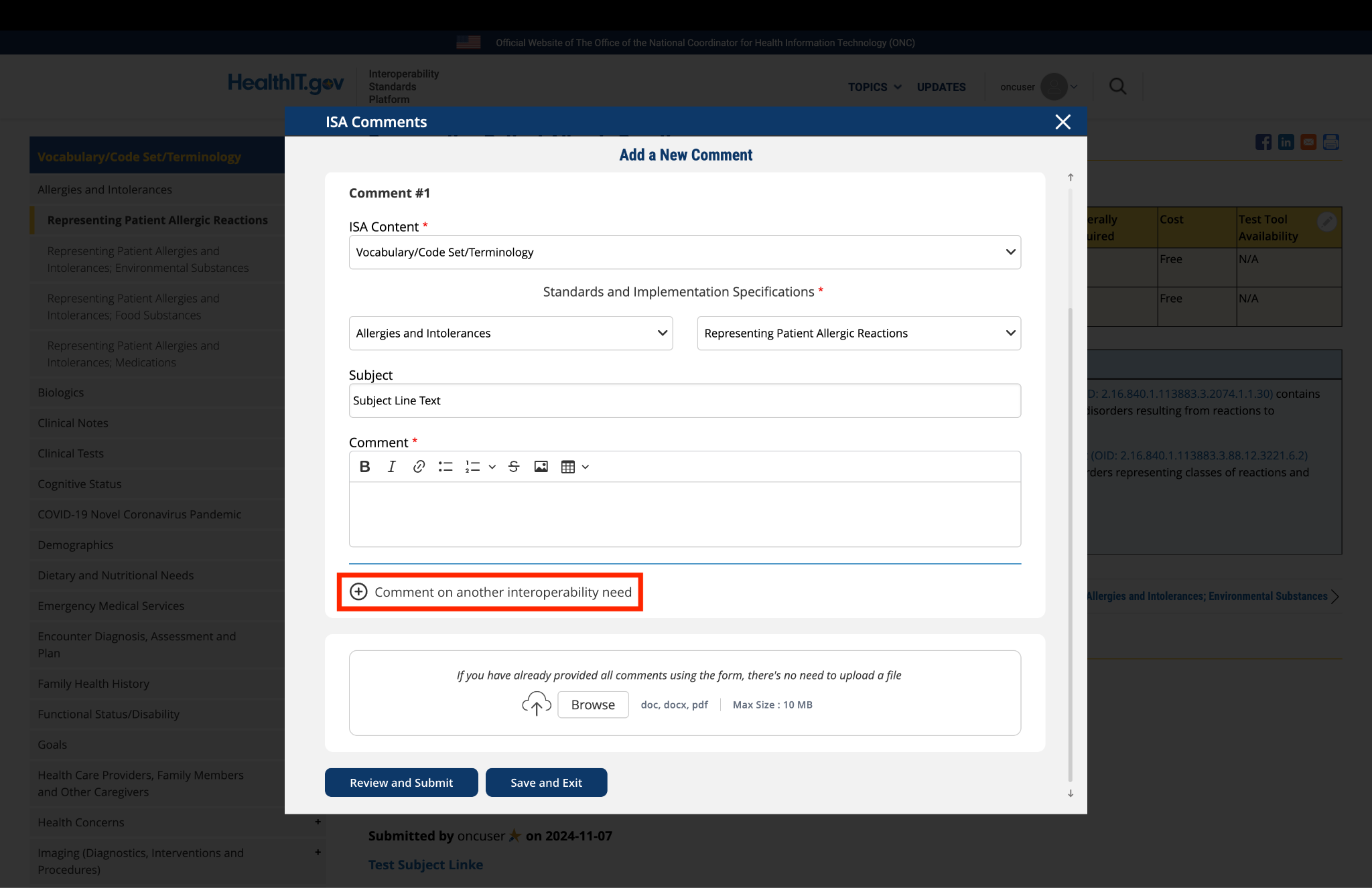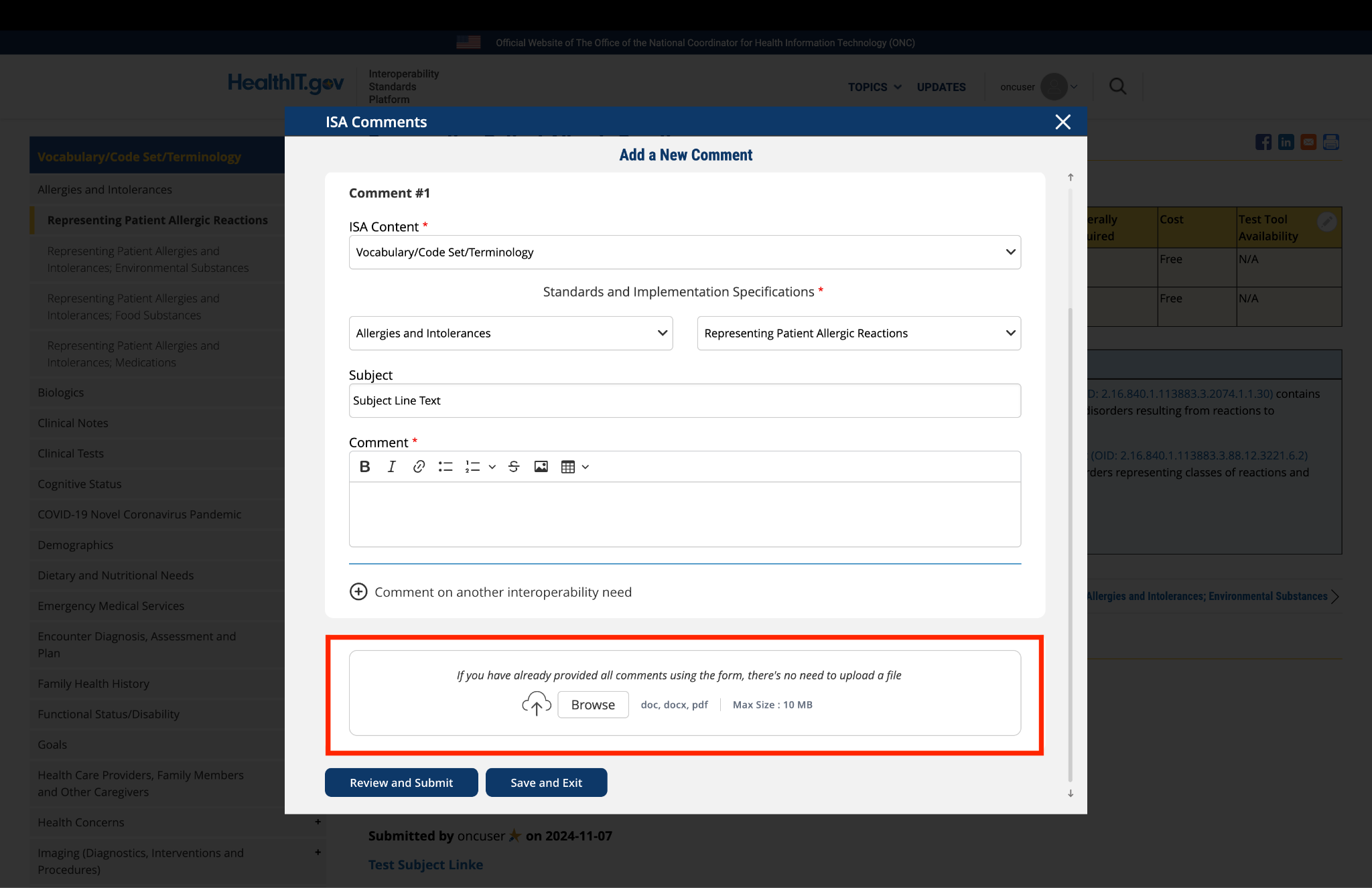| Type | Standard / Implementation Specification | Standards Process Maturity | Implementation Maturity | Adoption Level | Federally required | Cost | Test Tool Availability |
|---|---|---|---|---|---|---|---|
|
Emerging Implementation Specification
|
Balloted Draft
|
Pilot
|
No
|
Free
|
No
|
||
|
Emerging Implementation Specification
|
In Development
|
Feedback requested
|
Feedback Requested |
No
|
Free
|
No
|
| Limitations, Dependencies, and Preconditions for Consideration |
Applicable Security Patterns for Consideration
|
|---|---|
|
|
Comment
Submitted by rcothren on
Update Status of ePOLST CDA Implementation Guide
The ePOLST CDA Implementation Guide represents an important move forward in creating a consensus CDA standard for a POLST portable medical order. It enables access to and exchange of POLST information by electronic health record (EHR) and emergency medicine services (EMS) data systems to capture patient wishes and physician orders concerning resuscitation and initial scope and focus of treatment. Several states are considering the use of the ePOLST CDA as a standard for interoperability and for use in POLST registry initiatives.
We appreciate ONC capturing this important work in the ISA. However, the entry listed in the 2023 Reference Edition is out of date. We respectfully ask that ONC update the entry to reflect that the ePOLST CDA Implementation has been published by HL7 as STU1 by:
- Updating the “Standard / Implementation Specification” to reflect the published version of the Guide on HL7 as the “HL7 CDA® R2 Implementation Guide: ePOLST: Portable Medical Orders About Resuscitation and Initial Treatment, Release 1 - US Realm” at https://www.hl7.org/implement/standards/product_brief.cfm?product_id=600 [hl7.org].
- Updating the “Standards Process Maturity” to “Balloted Draft”.
- Updating the “Implementation Maturity” to “Pilot” to reflect the plans of the Oregon POLST registry to pilot test the Implementation Guide and the National POLST Collaborative promotion of pilot testing in other states.
- Updating the “Adoption Level” to one filled circle, consistent with other Emerging Implementation Specifications with Pilot level Implementation Maturity and reflecting the strong promotion of the Guide by several states and the National POLST Collaborative.
- Updating the “Limitations, Dependencies, and Preconditions for Consideration” to read:
- The ePOLST CDA Implementation Guide is based on the National POLST form, first published in August 2019 and adopted by several states. The National POLST form represents a major step toward national consensus on a POLST form developed through many months of interviews and listening, consensus building, feedback, compromise, and iterative revisions.
- Use of the ePOLST CDA Implementation Guide requires that a state-adopted POLST form be compatible with the National POLST form, but does not require adoption of the National POLST form.
We also note that the correct term for this section of the ISA is "Advance Care Planning" rather than "Advanced Care Planning" as it currently appears in the ISA.
Robert M. Cothren, PhD
Technology Advisor, National POLST Collaborative








Submitted by rcothren on
Update status of ePOLST CDA Implementation Guide
The ePOLST CDA Implementation Guide represents an important move forward in creating a consensus CDA standard for a POLST portable medical order. It enables access to and exchange of POLST information by electronic health record (EHR) and emergency medicine services (EMS) data systems to capture patient wishes and physician orders concerning resuscitation and initial scope and focus of treatment. Several states are considering the use of the ePOLST CDA as a standard for interoperability and for use in POLST registry initiatives.
We appreciate ONC capturing this important work in the ISA. However, the entry listed in the 2023 Reference Edition is out of date. We respectfully ask that ONC update the entry to reflect that the ePOLST CDA Implementation has been published by HL7 as STU1 by:
We also note that the correct term for this section of the ISA is "Advance Care Planning" rather than "Advanced Care Planning" as it currently appears in the ISA.
Technology Advisor, National POLST Collaborative